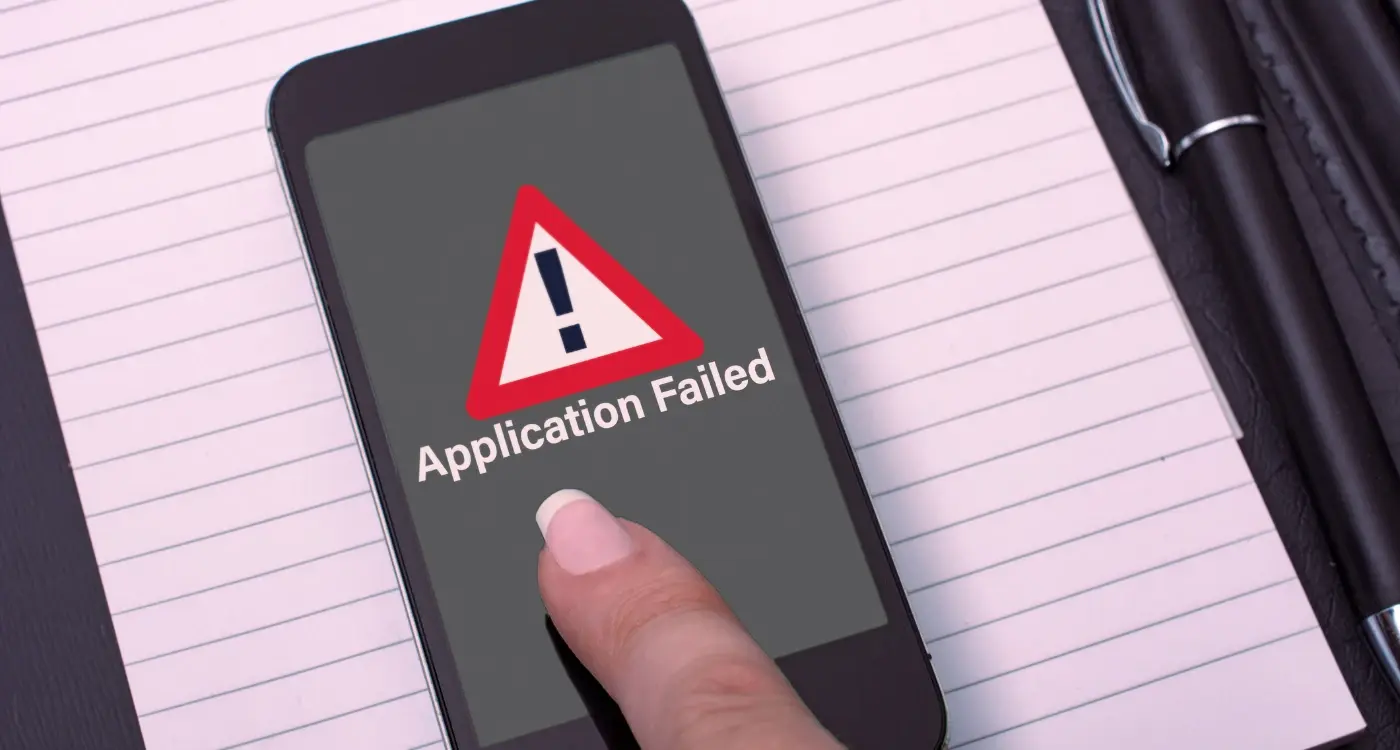What Happens If You Stop Paying for App Care?
What happens when you just... stop? Stop paying for app updates, stop monitoring performance, stop fixing bugs that creep in? I mean, apps don't just break overnight, right? That's what most business owners think when they're looking at their monthly app maintenance bills and wondering if they really need to keep spending money on something that seems to be working just fine.
Here's the thing though—and I've seen this play out dozens of times with clients who thought they could go it alone—apps are like cars. You can drive one for months without an oil change, and it'll seem perfectly fine. Right up until the engine seizes. The difference is, when your app "breaks down," it takes your business reputation, user data, and revenue stream with it.
I've been building and maintaining apps for years now, and the neglected app consequences I've witnessed range from mildly annoying to absolutely devastating. We're talking about businesses that lost thousands of users overnight, companies that faced data breaches because they ignored security patches, and startups that had to rebuild their entire app from scratch because the technical debt became too massive to fix.
The cost of fixing a neglected app is typically three to five times higher than the maintenance you avoided paying for in the first place
But here's what really gets me—app abandonment costs aren't just financial. They're about lost trust, damaged brand reputation, and missed opportunities that your competitors will happily scoop up while you're dealing with the mess. The good news? Understanding what actually happens when you stop caring for your app is the first step in making sure it never happens to you.
The Immediate Technical Breakdown
Right, let's talk about what actually happens when you stop paying for app maintenance—and I mean what happens immediately, not months down the line. It's a bit like stopping oil changes on your car; nothing dramatic happens on day one, but the damage starts accumulating straight away.
The first thing that goes wrong? Your app stops getting security patches. This isn't just about hackers breaking in (though that's definitely a risk)—it's about all the small vulnerabilities that get discovered daily in the frameworks and libraries your app depends on. When you're not paying for maintenance, these don't get fixed. Period.
But here's what really catches people off guard: operating system updates. Apple and Google release new versions of iOS and Android regularly, and each one can break something in your app. I've seen apps that worked perfectly fine become completely unusable after a major OS update because nobody was there to test compatibility and push out fixes.
What Breaks First
From my experience, here's the typical order of technical failures when maintenance stops:
- API connections start failing as third-party services update their endpoints
- Push notifications stop working due to certificate expiry
- Payment processing breaks when compliance requirements change
- Login systems fail as authentication protocols get updated
- App crashes increase on newer devices and OS versions
The really frustrating part? Users don't care why your app isn't working—they just know it doesn't work anymore. And once they delete it, getting them back is bloody expensive. We're talking about rebuilding trust, not just fixing code.
Actually, I've had clients come to me after six months without maintenance, wondering why their five-star app suddenly has dozens of one-star reviews complaining about crashes and broken features. The technical debt builds up faster than most people realise.
Security Vulnerabilities and Data Risks
Right, let's talk about something that genuinely keeps me up at night—security vulnerabilities in neglected apps. When you stop maintaining your app, you're basically leaving the front door wide open for hackers. It's honestly one of the most dangerous aspects of app abandonment that business owners don't think about until its too late.
Here's what happens: your app relies on dozens of third-party libraries and frameworks. Every month, security researchers discover new vulnerabilities in these components. When patches get released, maintained apps get updated quickly. But abandoned apps? They sit there with known security holes, becoming easier targets each day.
Common Security Risks in Neglected Apps
- Outdated encryption protocols that can be easily cracked
- Vulnerable authentication systems allowing unauthorised access
- Unpatched API endpoints exposing user data
- Insecure data storage putting personal information at risk
- Man-in-the-middle attack vulnerabilities
- SQL injection and cross-site scripting weaknesses
But here's the thing—data breaches aren't just technical problems, they're business killers. Under GDPR, you could face fines of up to 4% of your annual turnover. And that's before we even talk about the reputation damage and legal costs.
I've seen apps that were perfectly secure when launched become sitting ducks within six months of being abandoned. The attack vectors multiply as operating systems evolve and your app's security measures become outdated. Users' personal data, payment information, and private communications all become vulnerable.
Set up automated security monitoring even if you're planning to reduce maintenance. Basic vulnerability scanning can alert you to critical issues before they become expensive problems.
The scary part? Most business owners don't realise they've been compromised until months later, when the damage is already done and their users' trust has been completely destroyed.
User Experience Degradation
Your users wont wait around while your app falls apart—and honestly, why should they? When you stop maintaining your app, the user experience starts crumbling in ways that are painfully obvious to everyone except maybe you. I've seen this happen time and again with clients who thought they could "set it and forget it."
The first thing users notice is the loading times. Apps that used to zip along suddenly feel sluggish because they're running on outdated code that hasn't been optimised for new operating systems. Then comes the crashes—nothing kills user trust faster than an app that randomly shuts down mid-task. But here's what really gets me: the visual bugs that make your app look completely amateur.
When Modern Devices Meet Old Code
New phone releases happen every year, and each one brings different screen sizes, processing capabilities, and interface changes. Your app that looked perfect on older devices might now have buttons that don't align properly, text that's too small to read, or features that are completely inaccessible on newer models. I've watched beautiful apps turn into embarrassing messes simply because they weren't updated to handle new device specifications.
The Notification Nightmare
Push notifications stop working properly when you ignore maintenance—and for most apps, that's basically cutting off your primary communication channel with users. Your carefully crafted re-engagement campaigns become useless when notifications don't reach users or, worse, when they do reach them but clicking does nothing because the deep links are broken.
The painful truth? Users have thousands of apps to choose from, and they'll switch to your competitor's app faster than you can say "we'll fix that in the next update." Once your user experience starts deteriorating, getting those users back is ten times harder than keeping them happy in the first place.
App Store Compliance Issues
Right, let's talk about something that genuinely keeps me up at night—app store compliance. Apple and Google are constantly updating their guidelines, and if you're not staying on top of these changes, your app can get pulled faster than you can say "policy violation."
I've seen perfectly good apps get booted from the App Store because they weren't updated to meet new privacy requirements or API changes. Apple's particularly strict about this stuff. They'll give you maybe 30 days notice to update your app before it gets the chop, and that's if you're lucky enough to spot their email in the first place.
The Dreaded Compliance Email
When Apple or Google sends you a compliance notice, its not a friendly reminder—it's basically a countdown timer to your app's potential death. Common issues include outdated SDKs, missing privacy policies for new data collection requirements, or apps that don't support the latest screen sizes. Android's a bit more forgiving, but they're tightening the screws too.
The mobile app ecosystem moves fast, and standing still is the same as moving backwards when it comes to compliance
Here's what really gets me: once your app gets removed for compliance issues, getting it back isn't just a matter of fixing the problem. You lose your download momentum, your search rankings tank, and users who can't find your app assume you've gone out of business. I've worked with companies that lost thousands of pounds in revenue during the weeks it took to get reinstated. The worst part? This whole mess could've been avoided with basic maintenance and staying current with platform updates.
Lost Revenue and Business Impact
Right, let's talk money—because that's what keeps most business owners up at night when their app starts falling apart. When you stop paying for app care, the financial impact isn't just about the technical problems; it's about how those problems translate directly into lost revenue and missed opportunities.
The most obvious hit comes from user abandonment. I've seen apps lose 40-60% of their active users within just a few months of stopping maintenance. Users don't stick around when apps crash, load slowly, or fail to work with the latest operating system updates. They simply delete your app and find a competitor that actually works.
But here's what really stings—the ripple effect on your business metrics. When your app stops working properly, you lose more than just downloads:
- Customer lifetime value drops as users churn faster
- In-app purchases and subscription renewals decline sharply
- Advertising revenue falls as engagement rates plummet
- New user acquisition becomes more expensive due to poor app store ratings
- Brand reputation takes a hit, affecting all your marketing channels
I worked with an e-commerce client who stopped their maintenance plan to "save costs" during a quiet period. Within four months, their app-driven sales dropped by 70%. The app became so unreliable that customers started avoiding it entirely, even going to competitors rather than using the company's website.
The Hidden Costs Nobody Talks About
The financial damage goes beyond direct revenue loss. Your customer service costs typically spike as frustrated users flood your support channels. Your team wastes time firefighting issues instead of focusing on growth. And when you finally decide to fix everything? You're looking at emergency development costs that are often 3-5 times higher than regular maintenance would have been.
Recovery Costs and Challenges
Here's the brutal truth about app recovery—it's always more expensive than you think it's going to be. I've had clients come to me with apps that have been neglected for months, sometimes years, and they're genuinely shocked when I tell them it would cost less to build a new app from scratch than to fix their existing one. It's a bit mad really, but that's the reality of software decay.
When you abandon an app, you're not just dealing with fixing bugs and updating code. The whole technology landscape moves on without you. APIs get deprecated, security protocols change, and user expectations evolve. What worked perfectly two years ago might now be completely unusable. I've seen apps that need complete architecture overhauls just to run on current operating systems—we're talking about rebuild costs that can easily hit £50,000-£100,000 for complex applications.
The data migration challenges alone can be a nightmare. User accounts, transaction histories, preferences—all of this information might be trapped in outdated database structures that don't play nicely with modern systems. And don't get me started on the compliance issues; trying to retrofit GDPR compliance into an old app architecture is like trying to fit a square peg in a round hole.
But here's what really hurts—the opportunity cost. While you're spending months and serious money trying to resurrect your app, your competitors are racing ahead with new features and better user experiences. Your users have probably already moved on to alternatives, and winning them back is exponentially harder than keeping them in the first place.
Before attempting recovery, get a proper technical audit done. Sometimes starting fresh is genuinely the smarter business decision, even if it feels like admitting defeat.
Prevention and Maintenance Strategies
After years of watching apps collapse from neglect—and honestly, it never gets easier to witness—I've learned that prevention is always cheaper than fixing what breaks. The good news? You don't need to spend a fortune on maintenance; you just need to be smart about it.
Think of app maintenance like servicing your car. You wouldn't skip oil changes for three years then act surprised when the engine seizes up, would you? Same principle applies here. Regular small investments prevent massive headaches later.
Monthly Health Checks
I always tell my clients to budget for monthly maintenance sessions. These aren't massive overhauls—they're quick health checks that catch problems early. We look at crash reports, review security patches, and test core functions. Takes about 4-6 hours per month but saves thousands down the line.
Security updates are non-negotiable. When Apple or Google release security patches, you've got maybe 30 days before you're considered vulnerable. I've seen apps get pulled from stores simply because they ignored these updates for months.
Budget Planning
Here's what I recommend for ongoing maintenance costs:
- Monthly monitoring and minor updates: £500-800
- Quarterly feature updates: £1,500-3,000
- Annual security audit: £2,000-5,000
- Emergency fund for critical fixes: £3,000-5,000
Yes, it adds up. But compare that to the £15,000-50,000 you'll spend rebuilding an app that's been neglected for two years. The maths is pretty clear.
The key is treating maintenance as an investment, not an expense. Your app is a business asset that needs care to retain its value—and more importantly, to keep making you money.
Real-World Case Studies
I've seen some proper horror stories over the years—apps that went from thriving to completely unusable because someone decided to stop paying for maintenance. Let me share a few cases that really stick with me, because honestly, they show just how quickly things can go wrong.
There was this brilliant fitness tracking app we'd built for a client. Really popular stuff, thousands of daily active users, great reviews. But after about 18 months, the company hit some financial troubles and decided app maintenance was an "unnecessary expense." Within six months, users couldn't sync their data properly, the app kept crashing on newer iOS versions, and the backend was throwing errors left and right. They lost 80% of their user base before they called us back, panicking.
The E-commerce Disaster
Another case involved an e-commerce app that processed thousands of transactions monthly. The owners thought they could just "set it and forget it" after launch. Big mistake. When payment processing APIs updated their security requirements, the app couldn't handle transactions anymore. Customers were getting charged but orders weren't going through. The reputation damage was massive—one-star reviews flooded in, and it took months to rebuild trust even after we fixed everything.
We went from being a five-star app to having customers calling us scammers overnight. The financial hit was bad, but losing customer trust was devastating.
The restaurant booking app case still gives me nightmares. They stopped maintenance just before a major Android update rolled out. The app became completely unusable for 60% of their users, but restaurants kept getting phantom bookings through cached data. Chaos doesn't even begin to describe it. These aren't isolated incidents either—I see this pattern repeatedly when businesses treat apps like websites that can just run themselves indefinitely.
After building and maintaining hundreds of apps over the years, I can tell you that stopping app care isn't just risky—it's business suicide. The apps I've seen crash and burn weren't usually victims of bad code or poor design; they were casualties of neglect.
Look, I get it. App maintenance feels like an ongoing expense without immediate visible returns. But here's what I've learned: the moment you stop caring for your app, you're basically setting a timer on its death. Security vulnerabilities pile up, performance degrades, users start leaving negative reviews, and before you know it, your app store ranking has plummeted.
The recovery costs are always—and I mean always—more expensive than regular maintenance would have been. I've had clients come to me with apps that haven't been updated in two years, wondering why their user base has disappeared. Rebuilding that trust and fixing accumulated problems can cost three to five times more than preventive care.
But it's not just about money, really. It's about your reputation. Once users lose confidence in your app, winning them back is incredibly difficult. They'll move to competitors who actually maintain their products, and they won't look back.
My advice? Treat app maintenance like you would any other part of your business. Budget for it properly, work with developers who understand long-term care, and remember that a well-maintained app is an investment in your company's future. The apps that succeed long-term aren't necessarily the ones with the biggest launch budgets—they're the ones that stay relevant, secure, and functional year after year.
Your app deserves better than abandonment. Your users certainly do.
Share this
Subscribe To Our Learning Centre
You May Also Like
These Related Guides

What Happens to My Business If My App Performance Is Poor?

What Happens If Apple Or Google Changes Their Push Notification Rules?



